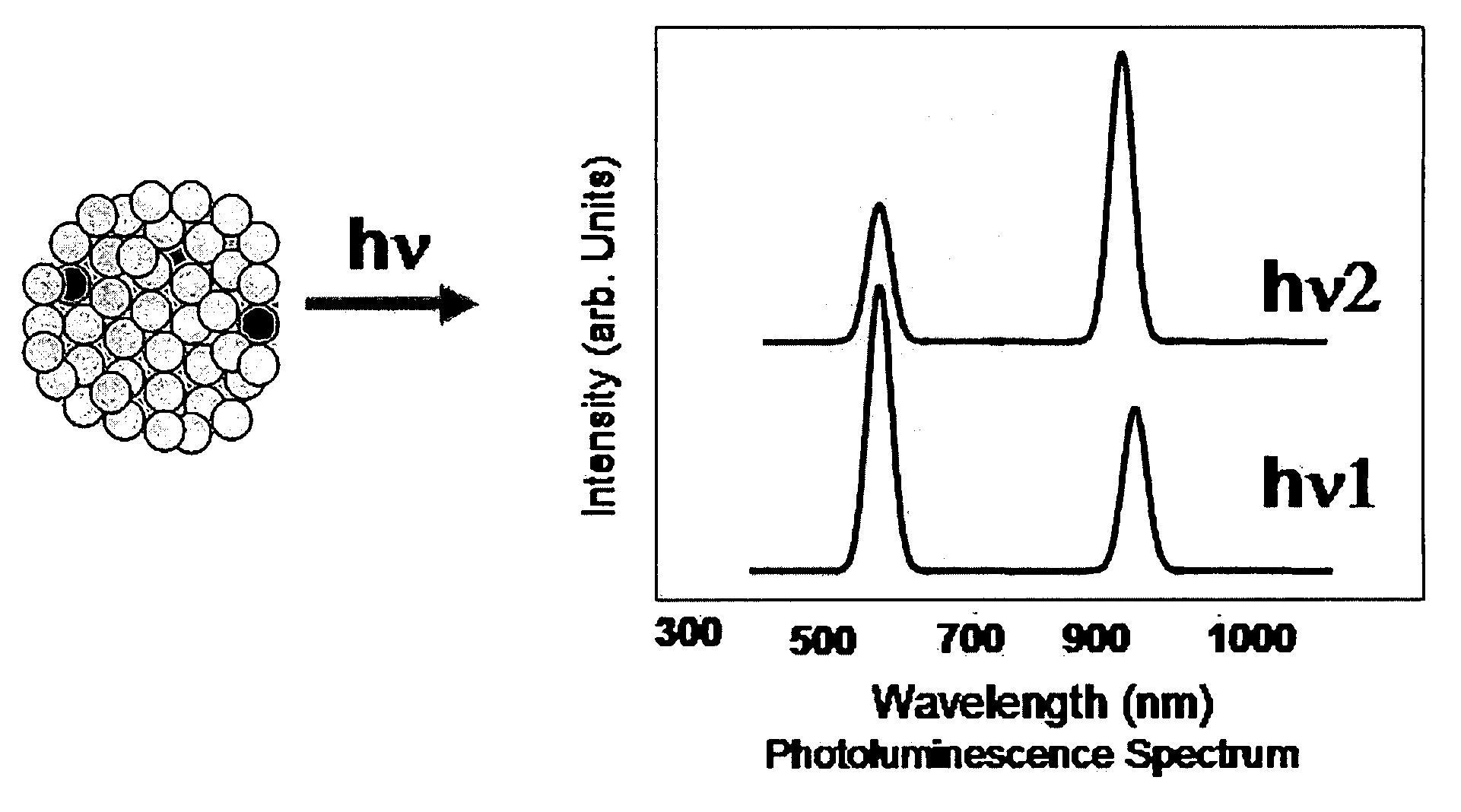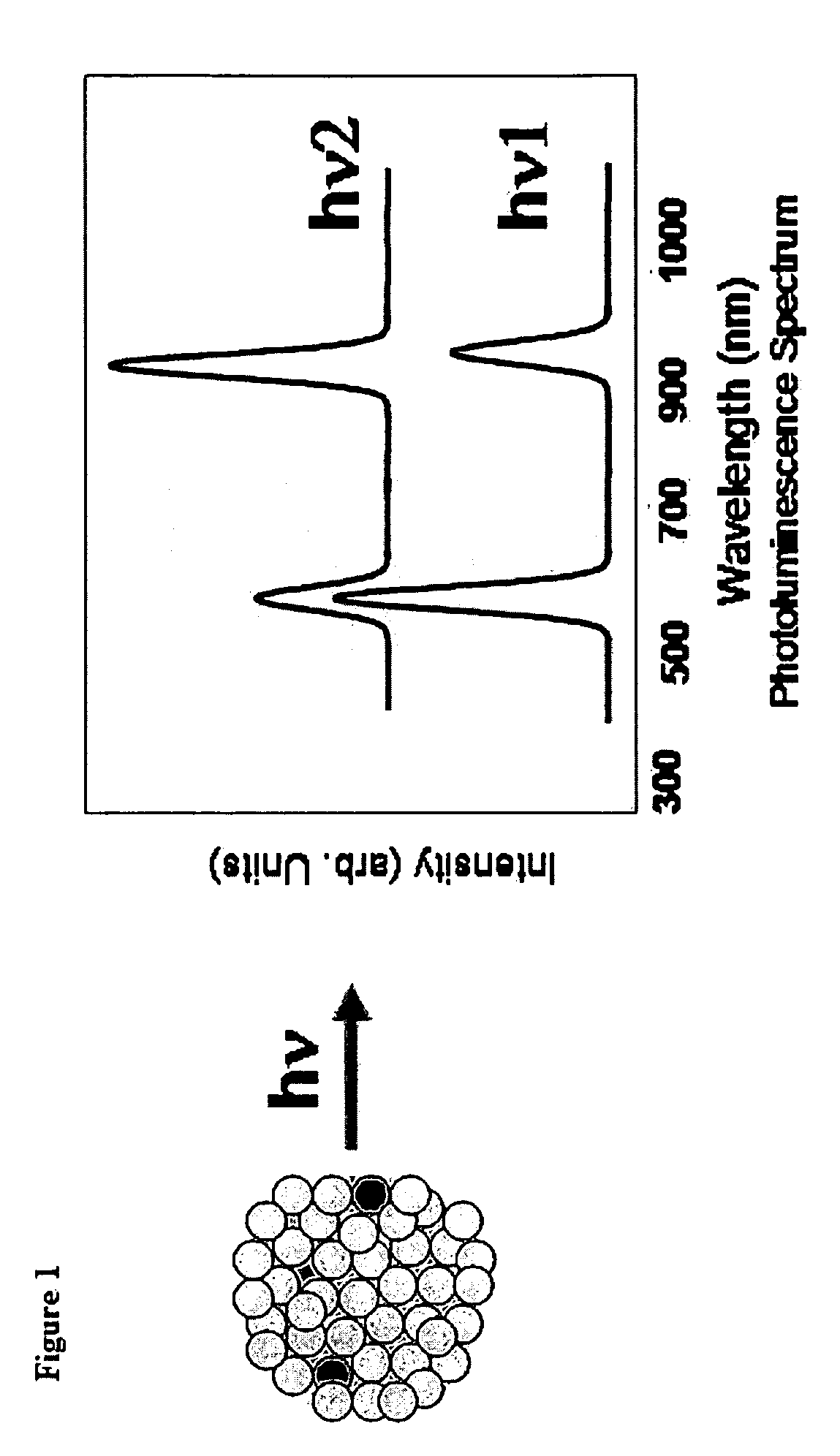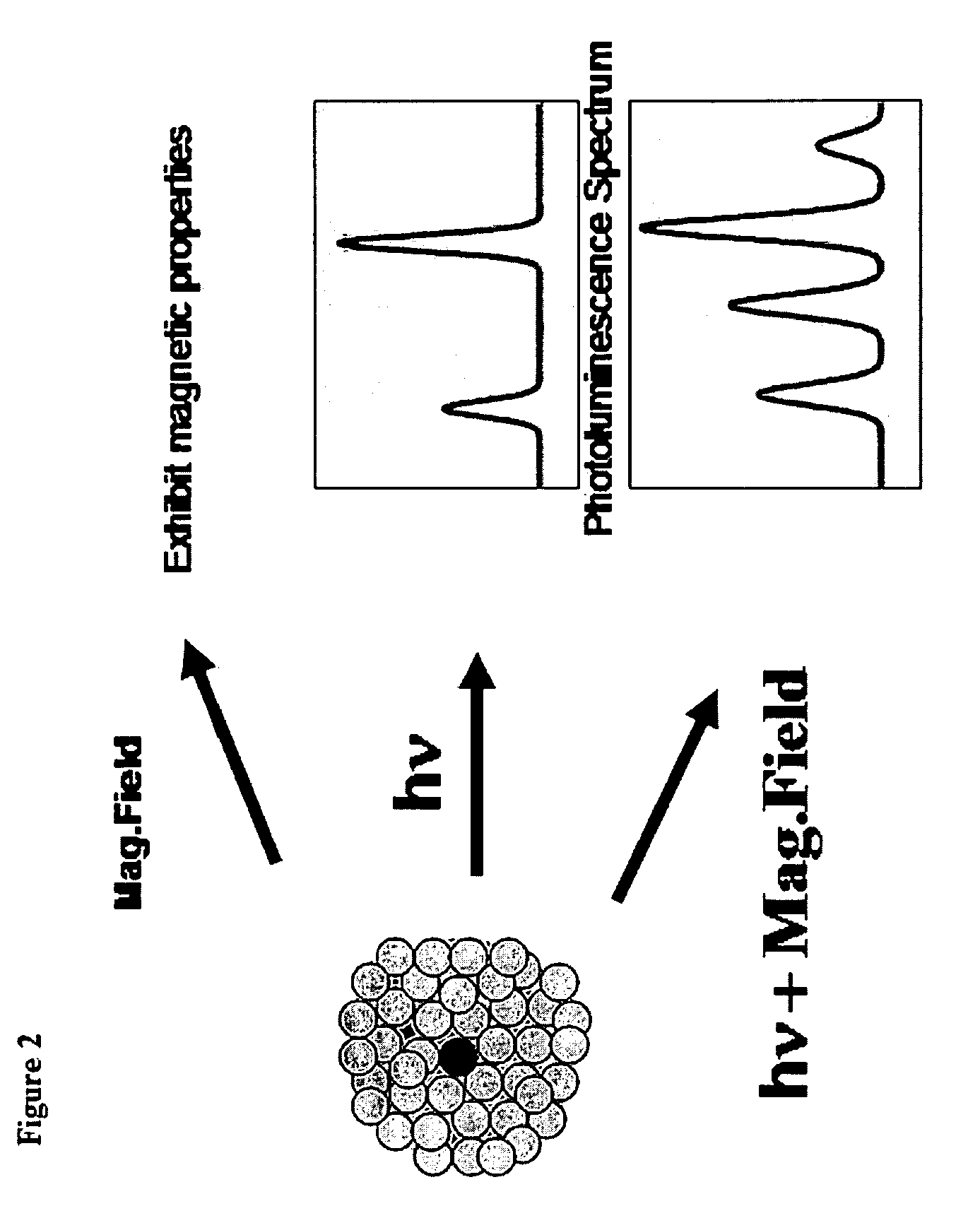Methods of synthesis of non-toxic multifunctional nanoparticles and applications
a nanoparticle and multifunctional technology, applied in the field of nanoparticles, nanostructures, fabrication methods with improved tunability, can solve the problems of increasing the cost of long, affecting the desired optical properties of nanocrystals, and difficult or virtually impossible to solve the problem of pre-formed nanoparticles being dissolved or solved, etc., to achieve high-efficiency dye-sensitized solar cells, foldable and portable solar cell panels, and the effect of improving translation efficiency
- Summary
- Abstract
- Description
- Claims
- Application Information
AI Technical Summary
Benefits of technology
Problems solved by technology
Method used
Image
Examples
Embodiment Construction
[0038]The invention is centered around the controlled synthesis of nanoparticles (NP) (preferably oxide based particles) through a combination of sol-gel processes, sonochemistry and doping. Both metal (M1) and bi-metal (M1, M2) isopropoxide sol-gels can be further processed with sonication and doping (D) to generate spherical shaped luminescent NP. Optionally, the solutions may also be annealed to encourage the proliferation of nano-scale structures. Also optional, is re-sonication of the solutions to create greater uniformity of nanoparticle size distribution.
[0039]The following symbology represents the various oxide nanostructure possibilities:
[0040]This approach can be generalized and applied to other systems (including non-oxide systems) as well. The use of bimetallic precursors and a greater array of non-toxic soluble dopants opens up enormous possibilities. When applied to security applications (i.e. ink and toner dispersions), this approach enables an infinite number of code...
PUM
| Property | Measurement | Unit |
|---|---|---|
| Dispersion potential | aaaaa | aaaaa |
| Concentration | aaaaa | aaaaa |
| Size | aaaaa | aaaaa |
Abstract
Description
Claims
Application Information
 Login to View More
Login to View More - R&D
- Intellectual Property
- Life Sciences
- Materials
- Tech Scout
- Unparalleled Data Quality
- Higher Quality Content
- 60% Fewer Hallucinations
Browse by: Latest US Patents, China's latest patents, Technical Efficacy Thesaurus, Application Domain, Technology Topic, Popular Technical Reports.
© 2025 PatSnap. All rights reserved.Legal|Privacy policy|Modern Slavery Act Transparency Statement|Sitemap|About US| Contact US: help@patsnap.com



